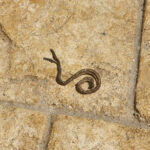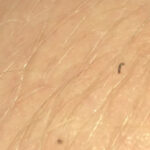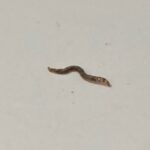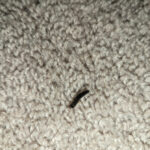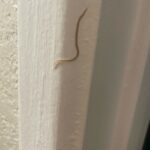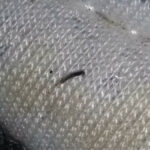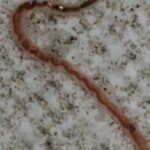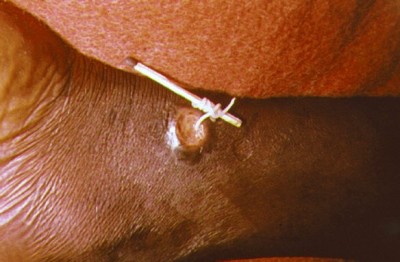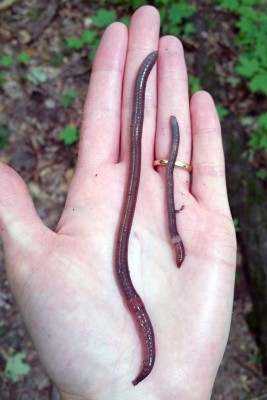
“My children found this worm on our driveway in west Tennessee”, writes Heather in her submission regarding the dark brown, segmented worm-like organism pictured below. “Can you help me identify it? Its underside was slightly lighter colored, kind of flattened, and it had a disk-like foot structure (possibly) at one end. Thank you.” Firstly, we want to thank Heather for the fantastic photos. The good lighting and sharp details make our job so much easier, and provides a great resource for others who find similar-looking organisms and want to know what they are. Secondly, whoever’s finger is in the photo below is very lucky, because what Heather’s children found is a leech.
Leeches are, generally speaking, ectoparasites. This means that, like all parasites, their relationship to other animals is completely one-sided: they feed off the nutrients of another animal without giving anything in return. Some parasites will go inside the bodies of their hosts to achieve this, like the tapeworm. Those parasites are called endoparasites. Ectoparasites feed off their hosts on the outside of their bodies, like fleas and, indeed, leeches. Leeches will attach themselves to the skin of their host using the mouth part that we can see in the photo below (the thinner, trunk-like part reaching for the finger) and will suck their blood. When they attach themselves to the host, they will often not feel that the leech is there. Now, we should note that not all leeches are ectoparasites. Some species of leeches hunt other smaller animals, and some feed on decaying organic matter like earthworms. Fun fact: leeches and earthworms belong to the same group of worms called annelids!
Most people also tend to think that leeches are only found in rivers, ponds and other freshwater bodies, but that’s not the case. There are also several species of leeches that dwell on land, which might not be a comforting thought for Heather and her children, but we say it is best to keep informed! The main difference between aquatic and terrestrial leeches (at least between those species that are ectoparasites), is that aquatic leeches have a far more varied diet. They will feed on fish, birds, amphibians, as well as mammals, while terrestrial leeches typically stick to mammals. That means that, if the leech Heather’s children found is parasitic, her children would not be free of risk in touching this leech, and had its mouth part reached the finger in the photo, it might have attached itself to it. Leeches are not dangerous if you remove them properly. If removed improperly, they might throw up the insides of their guts into your open wound, which — depending on what they were feeding on previously — could lead to a host of problems. But, seeing as neither Heather nor her children were bitten, they do not have to worry about this.
To conclude, the brown, worm-like critter Heather’s children found are a leech. They can be identified by the unique shape of their bodies, their multiple segments, and their dark coloration. Provided that any given leech could potentially be parasitic, it is best to avoid touching and handling them. We hope this helps, and we wish Heather, as well as her children, the very best!
All About Worms is always free, always reader-supported. Your tips via CashApp, Venmo, or Paypal are appreciated! Receipts will come from ISIPP Publishing.
You might also find these guys interesting!






